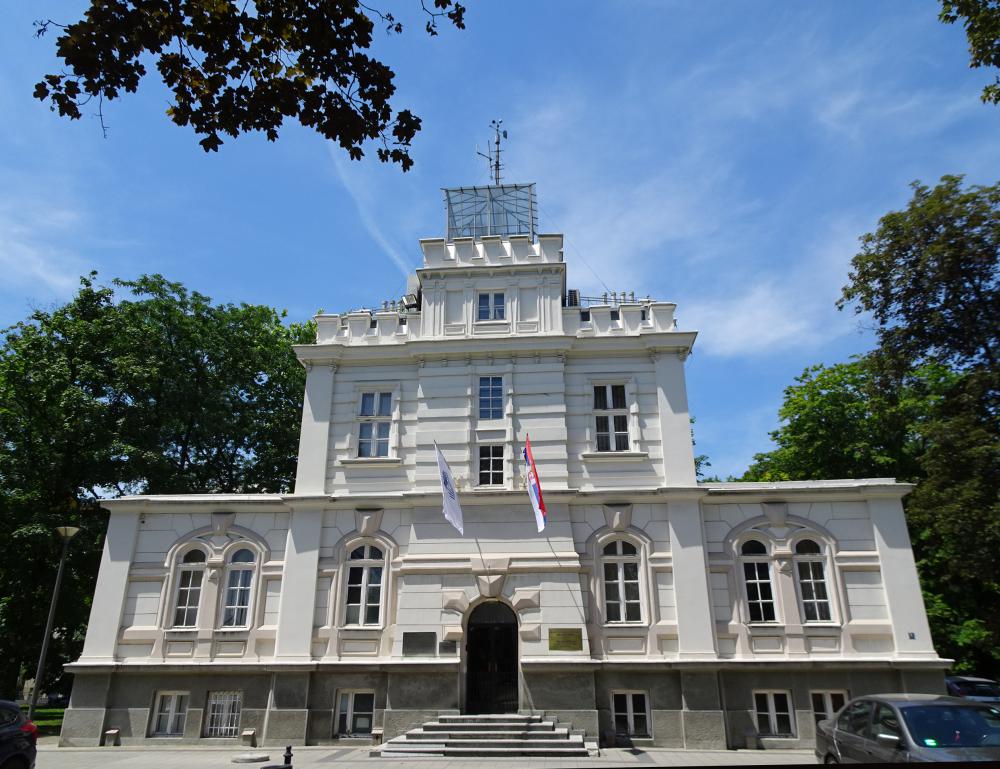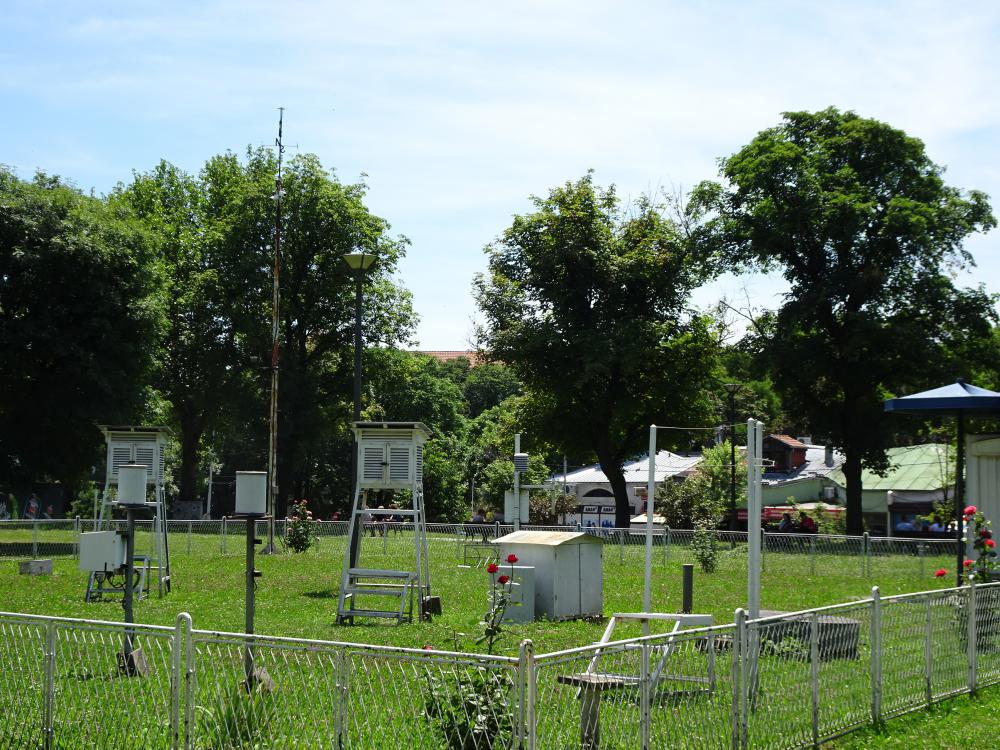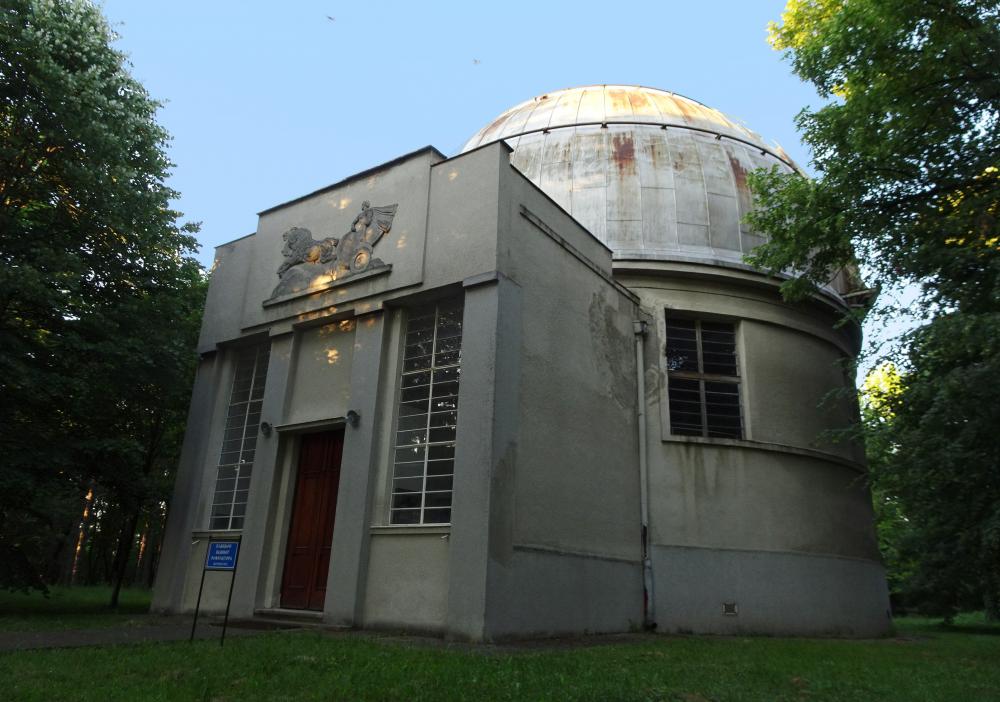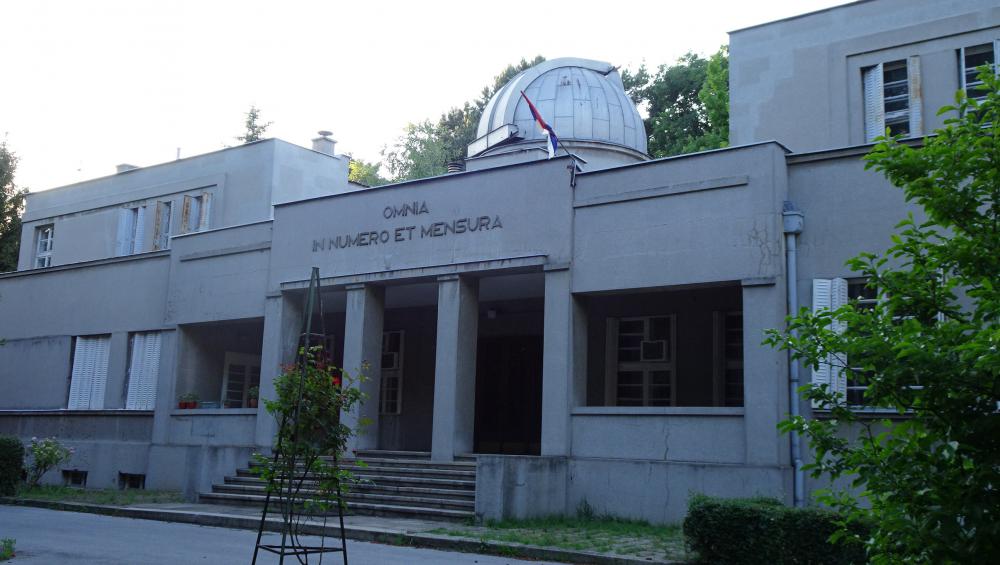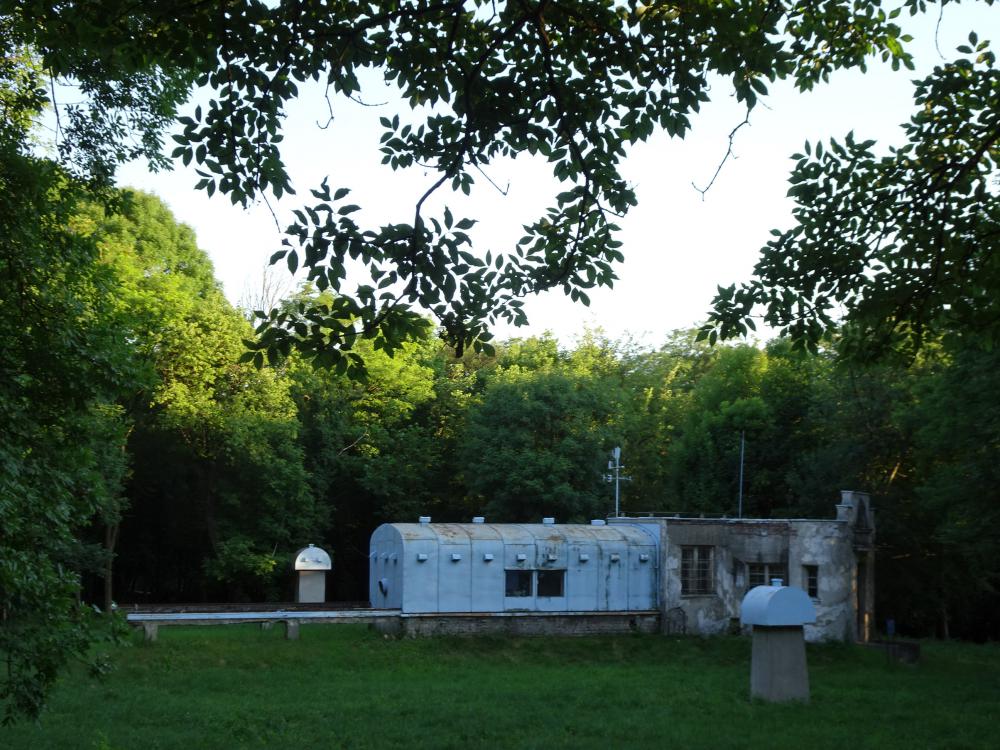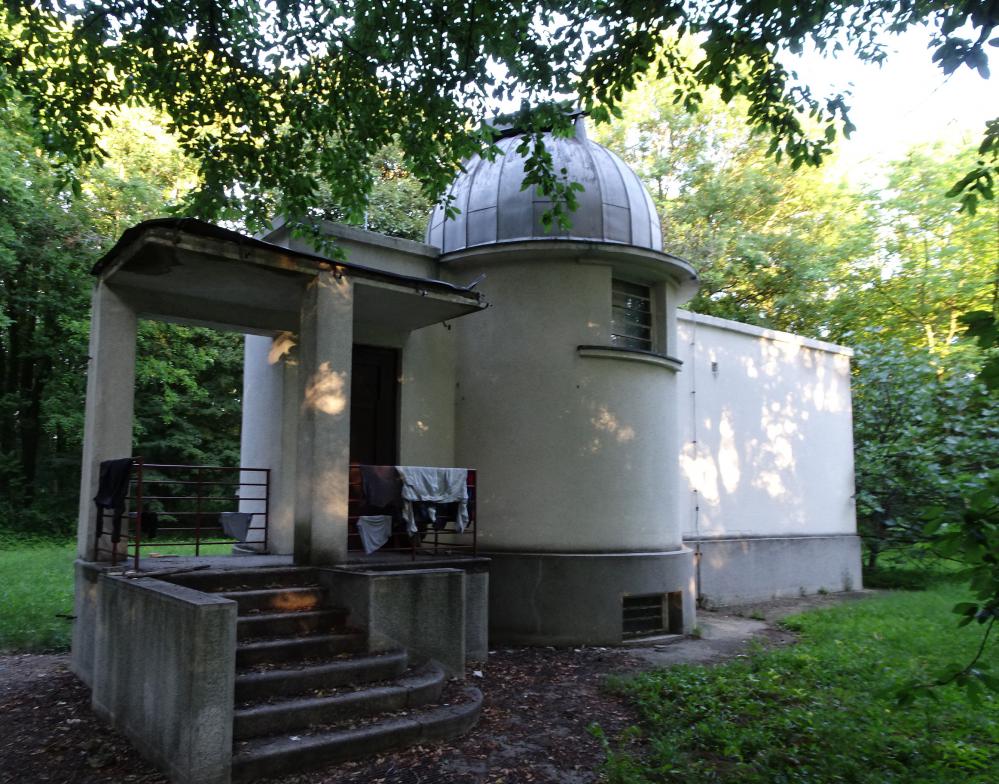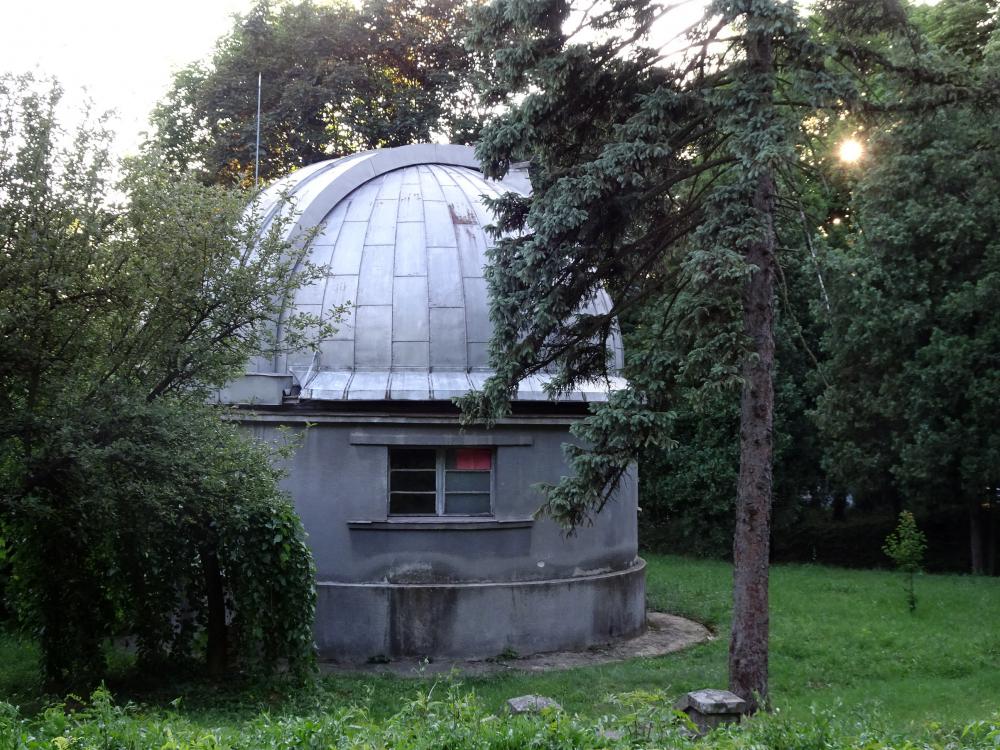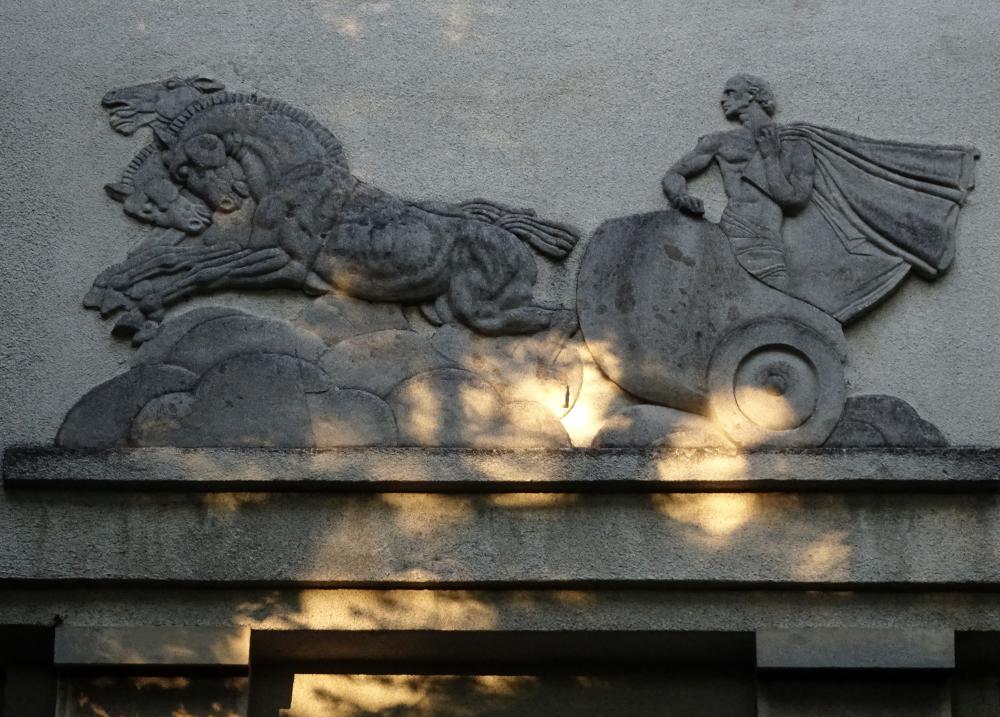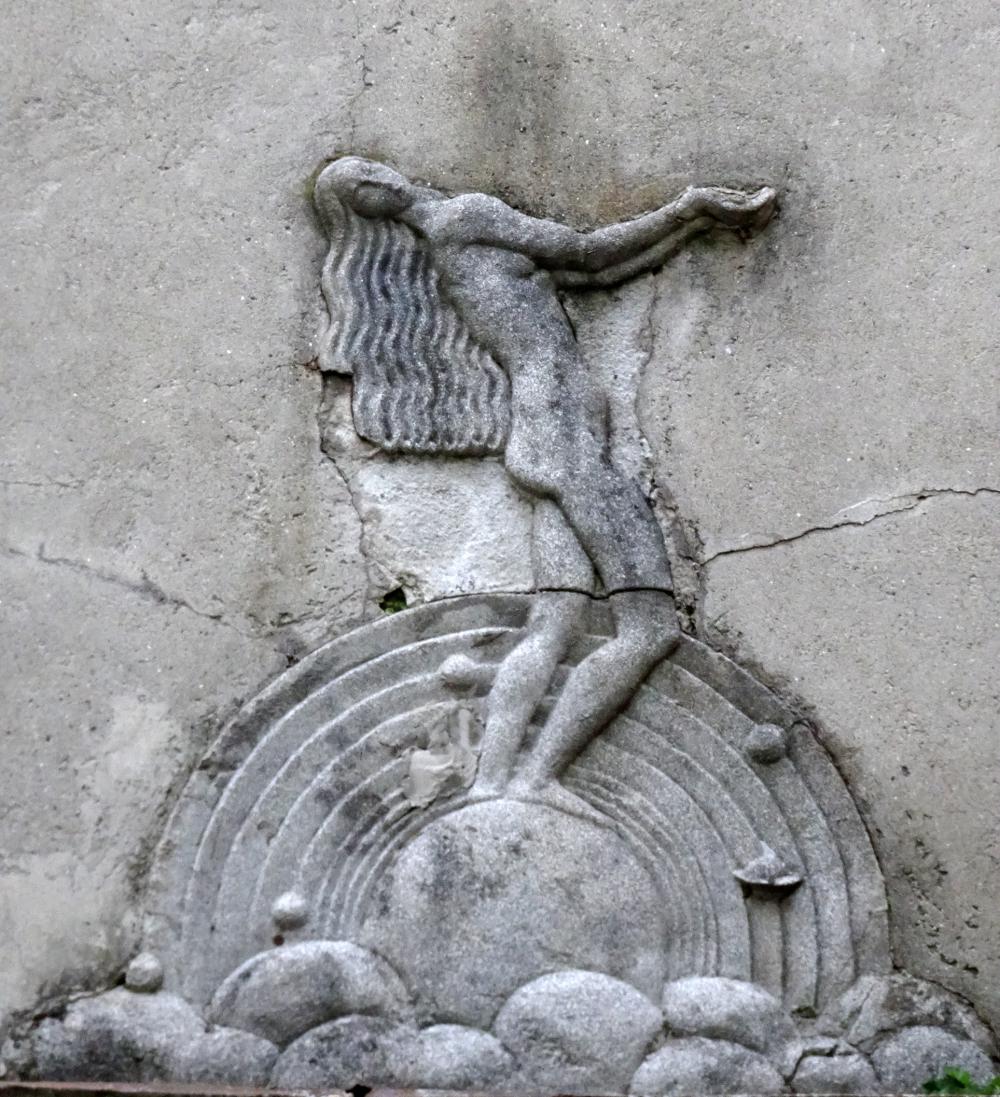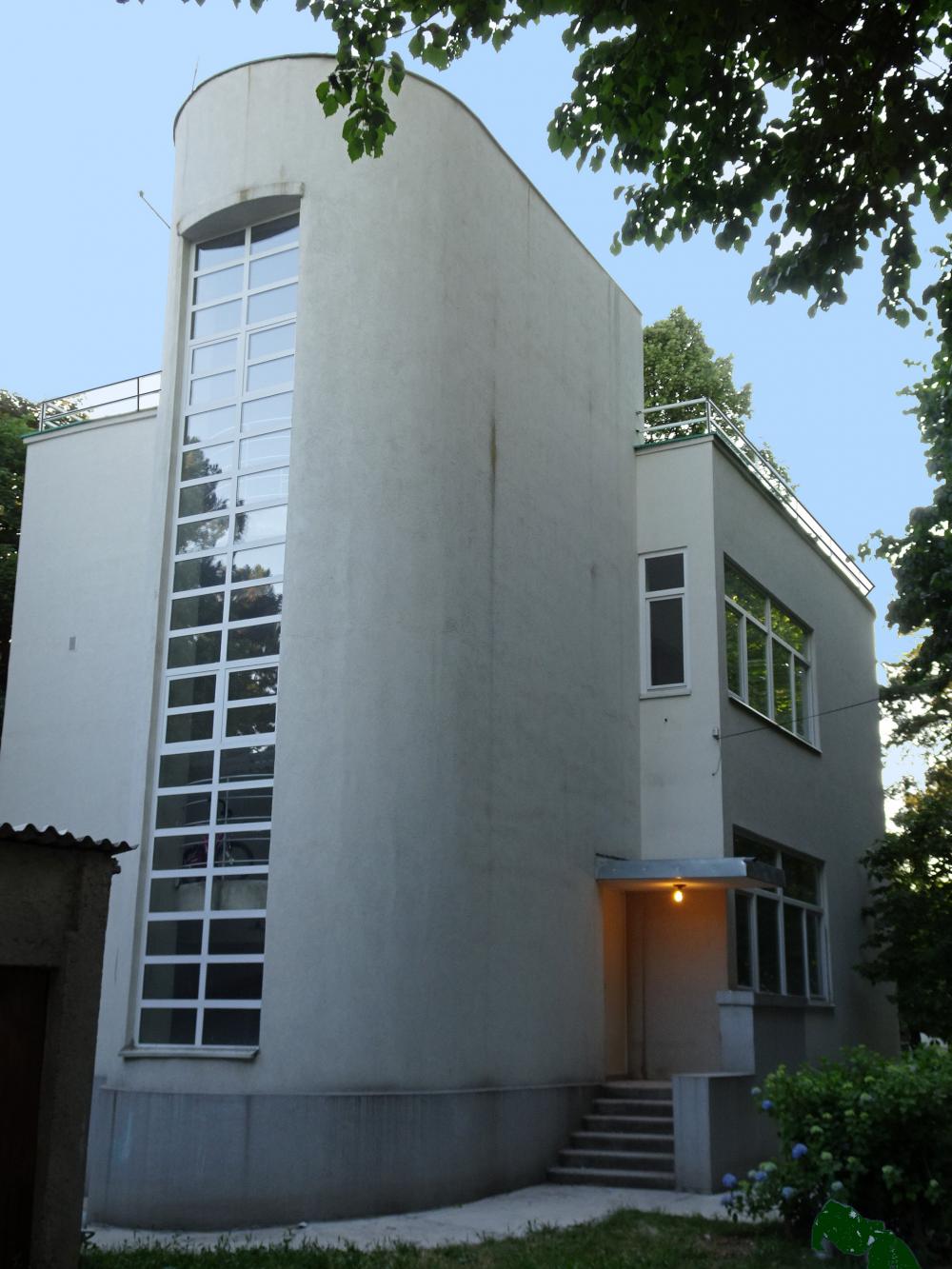
Category of Astronomical Heritage: tangible immovable
Belgrade, Serbia

Description
Geographical position
Volgina 7, P.O.Box 74 11060 Belgrade (Beograd), Serbia
Location
Latitude 44°48’13’’N, Longitude 20°30┬┤29’’E, Altitude 253m (830 ft)
IAU observatory code
057
Description of (scientific/cultural/natural) heritage
Belgrade Astronomical Observatory is one of the oldest scientific institutions in Serbia. Its past development forms an important part of the history of science and culture in these regions.
Fig. 1. Belgrad Meteorological Observatory (Photo: Gudrun Wolfschmidt)
Old Meteorological (and Astronomical) Observatory (1887 to 1891)
Milan Nedeljkovic (1857--1950), director from 1887 to 1924
The architect Dimitrije "Mita" T. Leko (1863--1914) designed some of the most important and technically perfected buildings in Belgrade of his time, especially the Belgrade Meteorological Station in 1891, in the Karadjordje Park, 8 Bulevar Oslobo{d}enja.
Fig. 2a. Belgrad Meteorological Observatory (Photo: Gudrun Wolfschmidt)
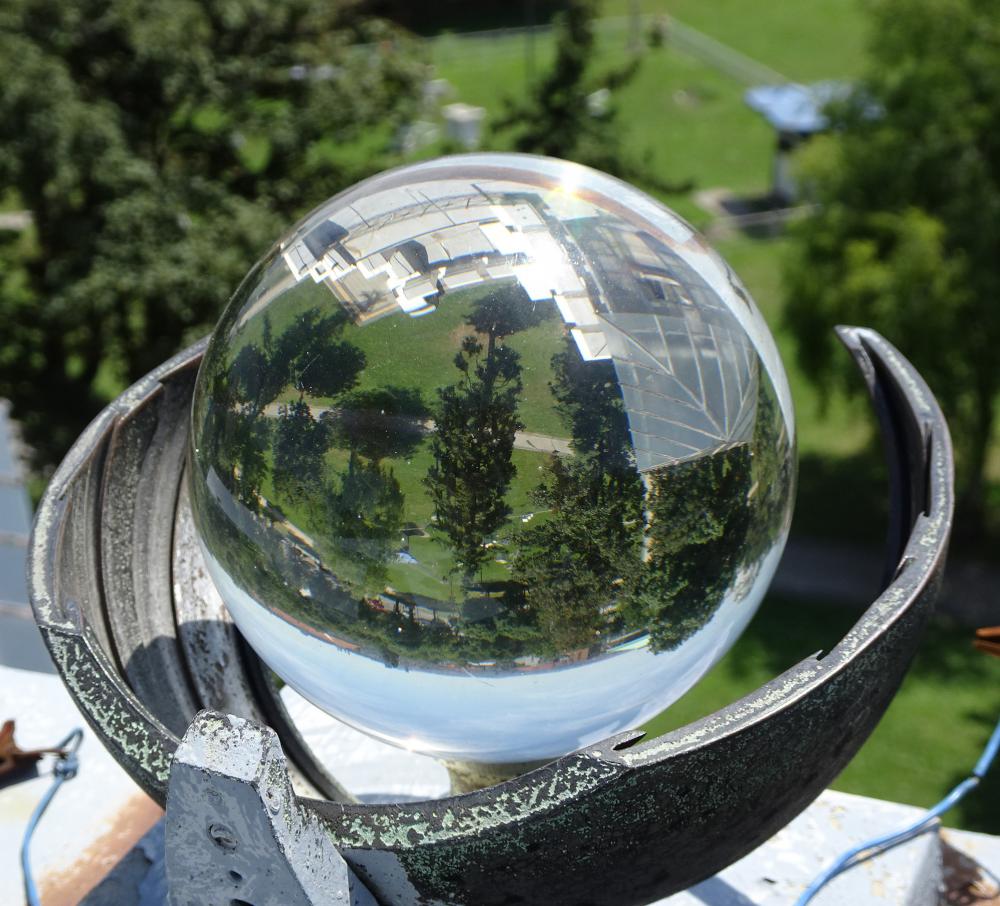
Fig. 2b. Belgrad Meteorological Observatory (Photo: Gudrun Wolfschmidt)
Seismological Institute (1906) -- Seismic and geomagnetic researches in Serbia
Nedeljkovic’s assistant Jelenko Mihailovic (1869--1958), head of the Seismological Institute since 1896
Apart from its importance for astronomy and meteorology, the new Observatory was a cradle of the seismic and geomagnetic researches in Serbia. Nedeljkovic borrowed the instruments for geomagnetic measurements in 1903 also a seismograph from Miklós Thege Konkoly (1842--1916), the founder of the Budapest Astronomical Observatory, and took care of building an earth-magnetism pavilion and a seismographic pavilion.
Victor Conrad was director from 1916 to 1918 during the Austro-Hungarian occupation in World War I.
New Astronomical Observatory (1928--1932)
New Astronomical Observatory 1925 (Separation from Meteorological Observatory)
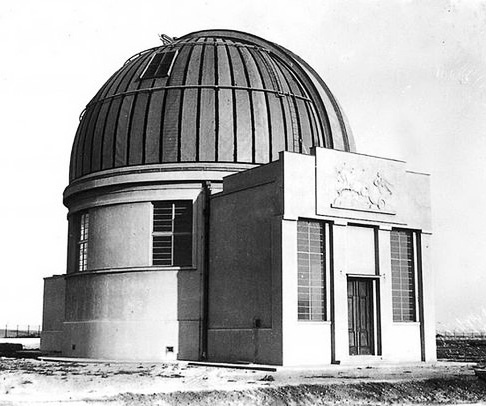
Fig. 2a,b. Belgrad Astronomical Observatory, Large Dome (© Mitrovic Francesca, Photo: Gudrun Wolfschmidt)
The new Astronomical Observatory (1928--1932) in Zvezdara (=concerned with stars) forest, on a hill on Veliki Vrav{c}ar, is an exceptional and highly valued complex, which was drawn up by the Czech architect Jan Dubovi (1892--1969), who receive his doctor’s degree in Prague, and was a member of GAMP (Group of Modern Outlook Architects). The construction works were carried out in 1930 to 1932, especially the impressive building of the 15-m-Dome for the Large Refractor, was the first Modernism monument in Belgrad. Architecture needs Sun, clearance and greenery.
"Dubovy planned the observatory buildings as a loose composition of pavilions settled in a park. Each single building is designed with great attention to make it unique yet is related to the others. In the design he paid much attention on strict functionality (some extremely valuable optical and precision astronomical instruments had to find place in some of the buildings) and a simple modern form. The construction is logical and pragmatic: A brickwork construction with structural elements in reinforced concrete and domes in steel, wood lining on the inside and sheet metal covering the outside surfaces" (quoted after Le Corbusier: "soleil, espace, verdure").
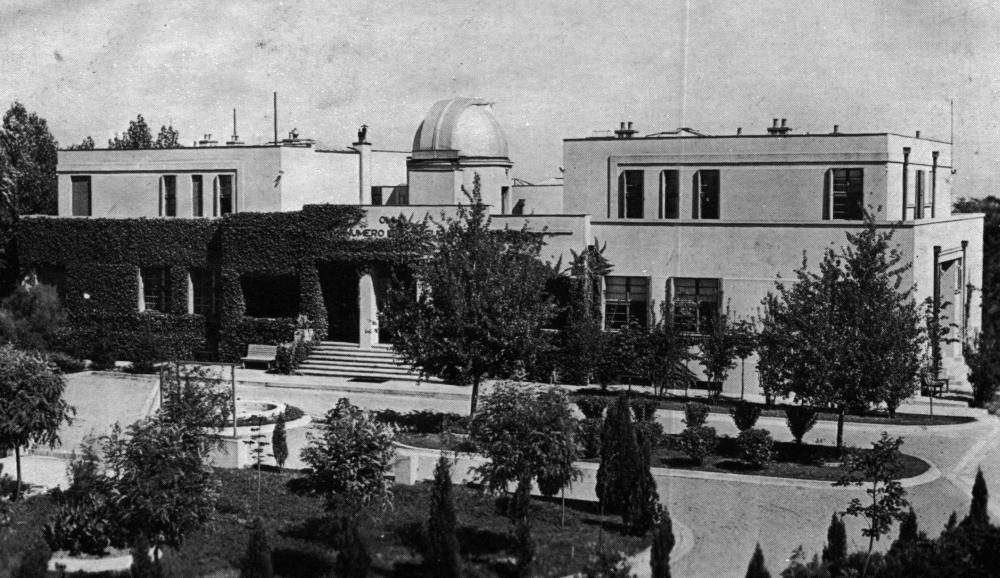
Fig. 3a. Belgrad Astronomical Observatory, main building (© Belgrad Observatory, Photo: Gudrun Wolfschmidt)
Fig. 3b. Belgrad Astronomical Observatory, main building (© Belgrad Observatory, Photo: Gudrun Wolfschmidt)
The 4.5 ha complex included the administrative main building (Omnia in numero et mensura), the large dome for the 65cm/10,5m Equatorial, Carl Zeiss of Jena (1895). In addition several pavilions with astronomical equipment were built; the instruments being mounted during the following two years.
Vojislav V. Miv{s}kovi’c (1892--1976), having studied in Budapest and Göttingen before the World War I, in 1919 assistant at the Marseille Observatory, in 1922 astronomer in Nice Observatory, was appointed as director, 1926--1946, and Chair (associated professor) of Theoretical and Practical Astronomy at the Faculty of Philosophy. Due to his knowledge in mathematical and numerical works he was interested in stellar statistics, and cooperated in mathematical climatology with M. Milankovic as well as with Miskovic and his own Precession Tables.
In 1936 Miskovic, assisted by Milorad Protic, active from 1936 to 1956, organized the Minor Planets (discovery of the minor planet 1564 Serbia among 43 discoveries) and Sun Observation Service.
In July 1941, the Observatory was occupyed by the German military, especially the professors Walter Grotrian (1890--1954) and Karl-Otto Kiepenheuer (1910--1975) from Potsdam decided to take the Observatory’s instruments as German property, dispatching the spectroheliograph and the comet seeker to Germany. Also the buildings were damaged during the war and had to be restored after the war.
The ensemble was enlarged to 10.5 ha and three new observation pavilions were built (1957 to 1959):
Pavilion of Large Vertical Circle Askania 190/2578 mm,
Pavilion of Large Transit Instrument Askania 190/2578 mm
Pavilion of Large Meridian Circle Askania 190/2578 mm.
An expedition to Hvar to observe the total solar eclipse on 15 Feb. 1961 was organized.
History

Fig. 4. Belgrad Astronomical Observatory, 65-cm-Equatorial, Carl Zeiss of Jena (1895) (© Belgrad Observatory)
Fig. 5. Belgrad Astronomical Observatory, Solar spectrograph (Photo: Gudrun Wolfschmidt)
Currently mounted in appropriate pavilions are the following instruments procured by Nedeljkovic:
- Large Refractor 65-cm-Equatorial (f = 10,5m), Carl Zeiss of Jena (1895) -- similar to the Vienna refractor, with high-precision tracking and additional instruments such as a recording micrometer and a spectroscope, in a 15-m-dome
- Solar spectrograph (monochromatic) LITTROW, 900cm/100.000 developed by adapting to the ZEISS 20/302cm Equatorial two astrocameras TESSAR and PETZVAL 16/80cm;
- Zenith-telescope ASKANIA 11/128,7cm (11/130cm) (1949);
- Large Meridian Circle ASKANIA 19/257,8cm mit Vakuum-
Miren (1959); - Large Vertical Circle ASKANIA 19/257,8cm (1959);
- Large Transit Instrument ASKANIA 19/257,8cm (1959);
- Transit Instrument BAMBERG 10/100cm (1959);
Fig. 6a. Belgrad Astronomical Observatory, Astrograph (Photo: Gudrun Wolfschmidt)
Fig. 6b. Belgrad Astronomical Observatory, Small Refractor (Photo: Gudrun Wolfschmidt)
- Astrograph ZEISS 16/80cm;
- Astrograph Photovisual Refractor ZEISS 13,5/100cm and 12,5/100cm;
- tower-building with water tank,
- building with a mechanic and carpenter’s workshop
- pavilions for the researchers and their families were built in the vicinity.
Fig. 7. Belgrad Astronomical Observatory, design at the Large Refractor (Photo: Gudrun Wolfschmidt)
Directors
- Milan Nedeljkovic (1857--1950), 1887 to 1899,
not from 5 July 1899 to 31 Oct 1900 - Djordje Stanojevic (1858--1921), 5 July 1899 to 31 Oct 1900
- Milan Nedeljkovic, 1900 to 1915
- Victor Conrad, 1916 to 1918
- Milan Nedeljkovic, 1919 to 1924
- Milutin Milankovic, 1925 to 1926
- Vojislav Miskovic, 1926 to 1946
- Milorad B. Protic, 1946 to 1948
- Milutin Milankovic, 1948 to 1951
- Vojislav Miskovic, 1951 to 1954
- Milorad B. Protic, 1954 to 1961
- Vasilije Oskanjan, 1961 to 1965
- Petar Durkovic, 1965 to 1970
- Milorad B. Protic, 1971 to 1975
- M. Mijatov, 1975 to 1981
- Miodrag Mitrovic, 1982 to 1989
- Istvan Vince, 1990 to 1994
- Milan Dimitrijevic, 1994 to 2001
State of preservation
In the nicely preserved Meteorological Observatory in the Karadjordje Park exists a museum section since the celebration of the Observatory’s centenary in 1987, a room dedicated to the origins of astronomical science in former Yugoslavia.
In 2001 the state placed the new Astronomical Observatory building under protection, declaring it a cultural monument - but restoration is really needed.
Fig. 8a. Belgrad Astronomical Observatory (Photo: Gudrun Wolfschmidt)
Fig. 8b. Belgrad Astronomical Observatory (Photo: Gudrun Wolfschmidt)
Comparison with related/similar sites
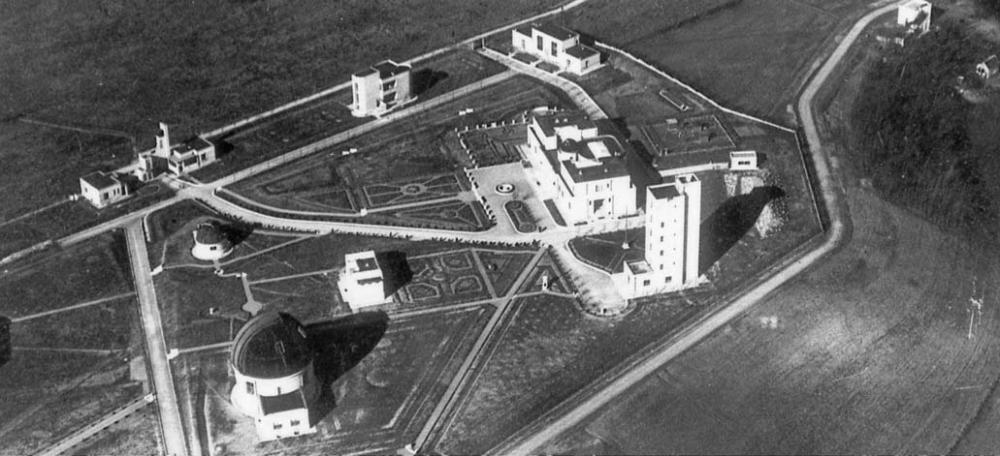
Fig. 9. Belgrad Astronomical Observatory, Astronomy Park (© Sasa Mihajlov)
Astronomy park with several buildings and pavilions in a park, like in several observatories around 1900.
Threats or potential threats
Since 2017, the Large Refractor is still operational, so as the dome above it, but it can’t be used for further scientific research due to the heavy light pollution in Belgrade.
Present use
The research topics of the Astronomical Institute since the 1950s are the following:
Double Stars and Variable Stars, stellar and solar physics and astronomical spectroscopy and photometric observations.
In 1950, Belgrade Observatory was no longer under Belgrade University, but under the iurisdiction of the Serbian Academy of Siences, and later under the Committee for Scientific Institutions, University and Scools for Higher Education of SR Serbia. 1985 the Observatory obtained the status of autonomous scientific research institute with the Executive Council of the Assembly of SR Serbia
Astronomical relevance today
The buildings are still used for astronomy. But for observation a new astronomical station on Mount Vidojevica (elevation 1155m) -- 150 km Southeast of Belgrade -- was erected in 2010: a 60cm (24 in) Cassegrain telescope (2011), named "Nedeljkovic", and a 1.4m (4 ft 7 in) fully robotic telescope (2016), named "Milankovic" -- part of the Worldwide Network of Robotic Telescopes.
References
Bibliography (books and published articles)
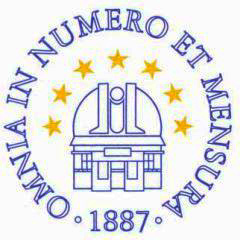
Fig. 10. Astronomical Observatory Belgrad (AOB), logo
- Dimitrijevic, Milan S.: 110 Years of Astronomical Observatory, Publ. Astron. Obs. Belgrade No 56 (1997), 9--20.
- Dimitrijevic, Milan S.: Belgrade Astronomical Observatory Historical Review. In: Publ. Astron. Obs. Belgrade 60 (1998), 162--170.
- Djokic, M.: The Astronomical Observatory of the Belgrade University between 1926 and 1941. In: Publ. Obs. Astron. Belgrade No 44 (1993), 115--117.
- Documentation of Cultural Heritage Preservation Institute of Belgrade, Cultural, Monument Dossier, Astronomical Observatory.
- Manevic, Z.: Jan Dubovi. Belgrade 1985.
- Mihajlov, Sasa: astronomska opservatorija - Astronomical Observatory -- Cultural Heritage Preservation Institute Belgrade. Belgrade 2010.
- Milasinovic-Maric, Dijana: Architect Jan Dubovy. Belgrade: Zaduzbina Andrejevic 2001.
Photo collection source: Milv{o}s Juirv{o}i’c
Links to external sites
- Belgrade Observatory on Zvezdara Hill --
Homepage: https://www.aob.rs/ - Belgrade Observatory - Wikipedia
https://de.wikipedia.org/wiki/Sternwarte_Belgrad - Astronomical Observatory Belgrade (aob),
http://www.aob.bg.ac.rs/old/Main/instruments.html#Section1 - Lorenzen, Dirk: Der Himmel über Serbien, DLF (2010),
https://www.deutschlandfunk.de/der-himmel-ueber-serbien.732.de.html?dram:article_id=107007. - Mitteilungen zur Astronomiegeschichte, Heidelberg 2007,
http://www.astro.uni-bonn.de/~pbrosche/aa/ma/ma24-07/ma24.pdf.
Links to external on-line pictures
no information available
No multimedia content published
Currently there is no multimedia content published for this case study
